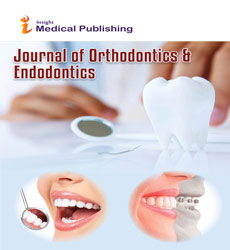Abstract
Interdisciplinary Approach Using Mini-Implants Anchorage ÃÆâÃâââ¬Ãâââ¬Å A Case Report
Implants and mini-implants have been used in orthodontics as an important method of anchorage. This method allows the treatment with minimal patients? cooperation, and also serves as a support for various types of orthodontic movement. The anchorage control is fundamental to the success of orthodontic treatment because of its rigid fixation in the bone. Mini-implants are easily installed, especially using computerized surgical guides. As an additional advantage, they enable the use of various accessories. This paper aims to describe the steps of a detailed preoperative planning for mini-implants through a case study report in order to improve treatment success. Specific software was used for planning and production of a surgical guide with a highly accurate and minimally invasive protocol, through CT and prototypes, increasing accuracy and assertiveness procedures. The success of the treatment was achieved, and the miniimplant remained in function throughout the active orthodontic treatment. Merging technology with technical knowledge leads the modern dentistry excellence in several areas as diagnosis, planning and prototyping. However, before installing the mini-implants, it is necessary previous knowledge of the desired movements, understanding the bone?s quality and quantity, biomechanics installation and orthodontic movements.
Author(s):
Luciana Aparecida Sousa Iwamoto, Gerson Yoshinobu Iwamoto, Monica Talarico Duailibi, Rosa Carriere Rossi, Silvio Eduardo Duailibi
Abstract | Full-Text | PDF
Share this

Google scholar citation report
Citations : 265
Journal of Orthodontics & Endodontics received 265 citations as per google scholar report
Abstracted/Indexed in
- Google Scholar
- China National Knowledge Infrastructure (CNKI)
- Cosmos IF
- Directory of Research Journal Indexing (DRJI)
- WorldCat
- Geneva Foundation for Medical Education and Research
- Secret Search Engine Labs
- Euro Pub
Open Access Journals
- Aquaculture & Veterinary Science
- Chemistry & Chemical Sciences
- Clinical Sciences
- Engineering
- General Science
- Genetics & Molecular Biology
- Health Care & Nursing
- Immunology & Microbiology
- Materials Science
- Mathematics & Physics
- Medical Sciences
- Neurology & Psychiatry
- Oncology & Cancer Science
- Pharmaceutical Sciences

